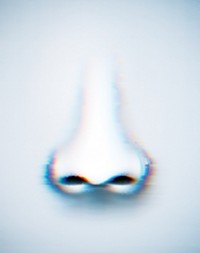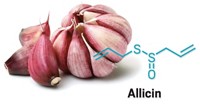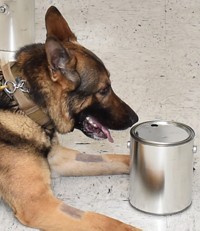Advertisement
Grab your lab coat. Let's get started
Welcome!
Welcome!
Create an account below to get 6 C&EN articles per month, receive newsletters and more - all free.
It seems this is your first time logging in online. Please enter the following information to continue.
As an ACS member you automatically get access to this site. All we need is few more details to create your reading experience.
Not you? Sign in with a different account.
Not you? Sign in with a different account.
ERROR 1
ERROR 1
ERROR 2
ERROR 2
ERROR 2
ERROR 2
ERROR 2
Password and Confirm password must match.
If you have an ACS member number, please enter it here so we can link this account to your membership. (optional)
ERROR 2
ACS values your privacy. By submitting your information, you are gaining access to C&EN and subscribing to our weekly newsletter. We use the information you provide to make your reading experience better, and we will never sell your data to third party members.
Chemical Communication
Newscripts
Stinkfrucht in Schweinfurt and sniffer dogs on the scent of SARS-CoV-2
by Laura Howes
July 25, 2020
| A version of this story appeared in
Volume 98, Issue 29
A stink in Schweinfurt

On Saturday, June 20, several employees at the post office in the Bavarian town of Schweinfurt started feeling ill. It was just before 8:30 a.m., and a smelly gas was escaping from one of the packages being held in the building. Fearing a health risk, the police were called. After evacuating the building, the police took the package outside for further examination. To their surprise, the package contained four very smelly durian fruits. The durian is also known as a Stinkfrucht (stink fruit) or Kotzfrucht (vomit fruit) in German, though it is nicknamed the King of Fruits in Southeast Asia. It is, however, banned from public transport and hotels in many parts of Asia because of its smell, which various people describe as similar to rotten onions or unwashed feet.
It’s an odor that can be surprising for American or European noses that are unused to the intense mix of fruity and sulfurous, according to Martin Steinhaus at the Leibnitz-Institute for Food Systems Biology at the Technical University of Munich. Steinhaus is an expert in identifying the odor chemicals of durian. Using a mix of techniques over the past few years, Steinhaus and colleagues have found that the smell of the durian mainly comes from a mix of sulfur-containing chemicals. Just two substances, ethyl (2S)-2-methylbutanoate (fruity) and 1-(ethylsulfanyl)ethane-1-thiol (onion-y), will give a good approximation of the stinky fruit. And last year, Steinhaus found the precursor molecule and a unique biochemistry behind the development of durian’s specific odor (J. Agric. Food Chem. 2019, DOI: 10.1021/acs.jafc.9b07065).
When Newscripts first contacted Steinhaus about the evacuation of the Schweinfurt post office, he admitted that he’d missed the reports in the local news. But he isn’t surprised that the unsuspecting workers panicked when they smelled the package. The unusual odor is “an experience” for the uninitiated and could have been mistaken for the sulfur chemicals added to natural gas supplies. But he says there were no health risks.
Steinhaus also gets his durians in the mail, but the supply has dried up during the recent COVID-19 outbreak as the number of flights from Thailand to Germany has dramatically reduced. As far as he knows, Steinhaus says, his durian deliveries have never caused a post office to be evacuated. He recommends multiple layers of air-tight plastic wrapping to prevent similar malodorous mishaps.
Sniffing out SARS-CoV-2

One group that definitely won’t thank you for forgetting to wrap up your durian tightly are the dogs currently in training to sniff out people infected with the new coronavirus, SARS-CoV-2, which causes COVID-19.
Working with dogs previously trained to identify cancer, Anna Hielm-Björkman and Anu Kantele ran a pilot study at the University of Helsinki and found that the dogs can distinguish urine samples from COVID-19 patients from the urine samples of healthy individuals. “It was fantastic to see how fast the dogs took to the new smell,” Hielm-Björkman says. Dog training teams based in various countries are now training dogs to sniff out the disease signature.
Scent detection dogs can accurately detect low concentrations of volatile organic compounds associated with diseases such as cancers, bacterial infections, and Parkinson’s disease, but it isn’t clear yet what COVID-19 biomarker the professional pooches are detecting. Nor do researchers know how long the scent of SARS-CoV-2 lingers. But if the pandemic continues, these dogs might help sniff out people who should take a coronavirus test. Just as long as no poorly wrapped parcels overwhelm the sensitive noses of these doggy detectives.
Please send comments and suggestions to newscripts@acs.org.





Join the conversation
Contact the reporter
Submit a Letter to the Editor for publication
Engage with us on Twitter